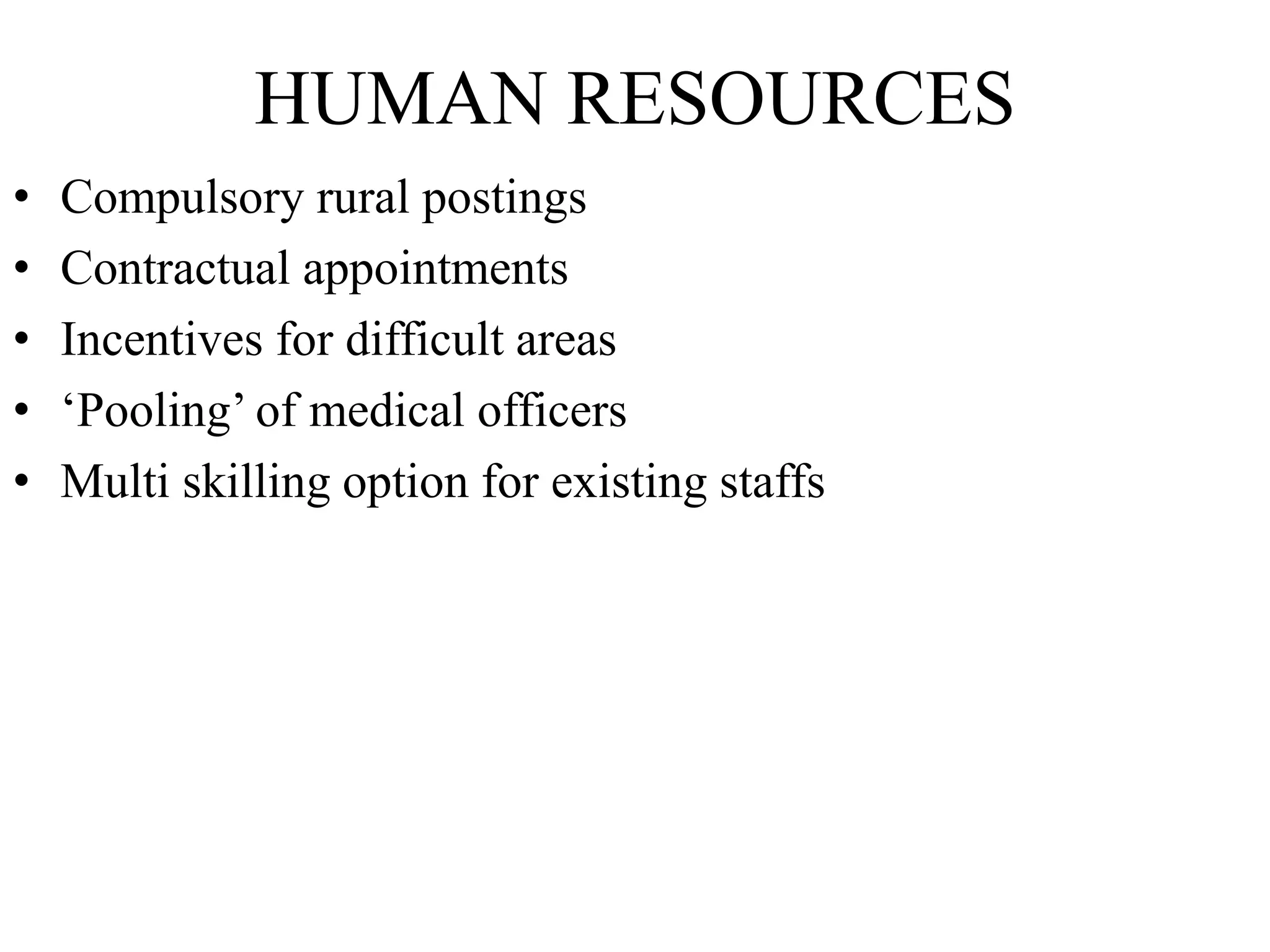The document discusses health sector reforms in India. It provides context on the need for reforms due to fiscal constraints and poor social indicators. Key reforms introduced include decentralization, increasing human resources, financial reforms, reorganizing the existing health system, improving health management information systems, increasing community involvement, and ensuring quality. National initiatives like the National Rural Health Mission aim to promote equity, efficiency, quality and accountability in primary healthcare. The overall goal of health sector reforms is to improve access to healthcare and ultimately population health outcomes.





























































